Leadership Wiring: The Neuroscience of Alpha Traits
Alpha vs beta traits originate in the brain’s wiring. Modern neuroscience reveals that alpha traits—leadership, decisiveness, goal orientation, and risk tolerance—are supported by a unique interplay between the prefrontal cortex, ventral striatum, and reward circuits. When someone with strong alpha traits steps into decision-making or competitive situations, their prefrontal cortex fires up to analyze choices, suppress distractions, and map pathways to success. At the same time, the ventral striatum releases dopamine in anticipation of achievement, literally energizing bold action and reinforcing confidence.
This neural configuration means that people with pronounced alpha traits experience challenge as a source of mental vitality rather than fatigue. While others may shy away from uncertainty, alphas gain psychological momentum, pursuing stretch goals and complex negotiations with clarity and drive. Their brains are primed to spot opportunities in the midst of conflict, moving swiftly within social hierarchies by interpreting micro-signals of influence, status shifts, and competitive barriers with remarkable speed.
Importantly, alpha traits are not just about dominant posture or command. The neuroscience of alpha traits shows that authentic leaders blend assertiveness with emotional regulation. Their prefrontal cortex facilitates not only action but also measured restraint—able to pause, adapt, and pivot when circumstances demand. This strategic capacity enables professionals to communicate a clear vision, inspire teams in high-pressure moments, and recover quickly from setbacks.
For business growth and executive coaching, understanding the neuroscience of alpha traits means more than labeling leaders—it provides actionable strategies. Professionals can assess their “alpha tendencies,” identify contexts in which boldness is an asset, and intentionally develop habits for greater impact. Whether facing a pivotal career crossroad, leading transformation, or building a personal brand, the alpha wiring becomes the foundation for authentic, magnetic leadership—turning risk into opportunity and vision into results.
The Adaptive Brain: Beta Traits as Social Superpowers
Beta traits are not just a personality label—they have a remarkable scientific basis in the functional organization of the brain. The neuroscience of beta traits centers on the orbitofrontal cortex, anterior cingulate cortex (ACC), insula, and a web of oscillatory connections, especially right frontal beta rhythms, that govern emotional regulation, social perception, adaptability, and inhibitory control. The ACC, for instance, uses beta oscillations to dynamically process reward information and guide adaptive choices in changing environments. This rhythm signals flexibility: individuals with strong beta traits excel at picking up subtle social cues, interpreting group dynamics, orchestrating alliance-building, and thriving amidst ambiguity and complex negotiation.
Neurochemically, the neuroscience of beta traits leverages oxytocin and serotonin, which support patience, collaboration, trust, and the sense of belonging within teams. Beta-oriented brains have a natural ability to defuse tension, build bridges between competing interests, and harmonize diverse viewpoints. Their brains filter out distractions, gate information adaptively between sensory and working memory circuits, and proactively clear space for new learning—just as beta bursts in the prefrontal and parietal regions help people switch mental gears before new challenges or conversations.
What makes beta traits a social superpower is their capacity for emotional intelligence and resilient adaptability. Instead of resisting change or confrontation, individuals with beta traits manage stress by leveraging strong cognitive control and social reward systems. They are the mediators, the consensus-builders, and relational leaders who nurture psychological safety in dynamic teams. Beta traits shine brightest in situations demanding subtlety, cooperation, and responsiveness—where high cognitive and inhibitory control allow for sophisticated group problem-solving and effective conflict management.
For coaching and personal development, the neuroscience of beta traits is highly actionable. Clients who recognize and cultivate beta traits can increase workplace influence by:
- Enhancing emotional intelligence and stress resilience
- Leading through relational, collaborative strategies instead of authority
- Adapting to shifting demands and personalities
- Interpreting non-verbal and implicit social signals to strengthen negotiation
Ultimately, the neuroscience of beta traits redefines what leadership success looks like: not just domination or visibility, but refined adaptability, alliance-building, and sustained group performance. In a world where work and relationships are fluid, beta-oriented neural networks offer a competitive advantage that is both measurable and transformational.
Evolutionary Origins: Why Alpha vs Beta Traits Persist

The interplay of alpha vs beta traits is deeply embedded in human evolutionary history, shaping not only how groups function but also why individuals succeed or fail in different environments. Evolutionary psychology and anthropology confirm that human societies thrived when both dominant and adaptive personalities were present. Alpha vs beta traits are seen not only as behavioral categories but as evolutionary adaptations: alpha traits fueled innovation and decisive action, protected vital resources, and established order in times of uncertainty. Beta traits fostered cooperation, nurtured learning, and enabled conflict resolution—qualities essential for building strong alliances and long-term group resilience.
Over hundreds of thousands of years, the balance of alpha vs beta traits determined which societies expanded and adapted, while those favoring only aggression or passivity faltered. The neuroscience behind alpha vs beta traits reveals a symbiotic relationship: evolutionary pressures have selected not just for leaders who pushed boundaries but also for collaborators who bridged divides. In early human tribes, pronounced alpha traits allowed chieftains to organize hunts, defend territory, and galvanize action during crisis. Without adaptive personalities—the beta traits—tribes risked fracturing from within, unable to resolve disputes or build the consensus necessary for survival.
As human communities grew in size and complexity, the expression of alpha vs beta traits became more diverse. Leaders with strong alpha traits frequently depended on the judgment, wisdom, and relational intelligence of beta-oriented allies, allowing the group to balance bold initiatives with measured caution. Evolution favored adaptive personalities, as those with beta traits learned courage and boundary-setting from their more assertive peers, while offering a counterweight against impulsive decisions and excessive risk.
This dynamic interplay between alpha and beta traits has been echoed across generations—tribes, families, and organizations all perform best when both sets of strengths are cultivated and valued. The healthiest systems leverage diverse personality inputs, creating space for competitive drive and inclusive dialogue. The emergence of social structures such as councils, advisory groups, and collaborative networks reflects the evolutionary necessity of integrating alpha vs beta traits for effective leadership and community building.
Modern neuroscience reinforces these lessons, revealing that brain regions supporting dominance and empathy, strategy and flexibility, are intertwined and constantly interacting. The persistence of alpha vs beta traits is not just historical or cultural—it is hardwired in the human brain, offering every individual the opportunity to adapt, grow, and thrive. The story of alpha vs beta traits, therefore, is a story of evolution’s wisdom: we are strongest not when we rely on one approach, but when we embrace the creative tension and practical synergy between boldness and adaptability, competition and cooperation.
Decision-Making Circuits: Alpha Confidence and Beta Intuition
Alpha personalities excel in decisive action. The neuroscience of alpha traits shows that their brains process incomplete information without freezing, shifting quickly from deliberation to execution. Prefrontal dopamine surges support risk-taking and innovative thinking, especially under pressure. These traits translate to decisiveness, rapid prioritization, and willingness to navigate ambiguity—making alphas influential in leadership and entrepreneurial ventures.
Meanwhile, beta traits excel in environments where nuance, pattern recognition, and consensus are crucial. The neuroscience of beta traits demonstrates greater default mode network activity, which supports reflective thinking and intuition in problem-solving. Beta personalities may seek additional data before acting, consult widely, and value collaborative feedback. For coaching clients, understanding these neural tendencies illuminates why some thrive in chaos while others excel through structure and relationship-building.
Social Dominance and Group Dynamics
Groups reflect power structures shaped by alpha vs beta traits. Neuroscience research identifies the limbic system and mirror neuron networks as central to status perception. Alpha traits activate dominance behaviors, influencing group direction, resource allocation, and social norms. In competitive settings, dominant personalities are often trendsetters or decision-makers, shaping organizational culture and performance.
Beta traits enrich group dynamics through mediation, cooperation, and emotional support. The neuroscience of beta traits supports consensus-building and conflict management—beta personalities often emerge as trusted advisors or cultural anchors. In practical coaching, teaching clients to recognize, blend, and apply both alpha vs beta traits leads to more balanced teams and organizations.
The Brain on Stress: Alpha Resilience vs Beta Recovery
Alpha vs beta traits offer distinct advantages and vulnerabilities in response to stress, creating highly individualized coping patterns. The neuroscience of alpha vs beta traits suggests that alphas often experience a spike in beta-band brain activity during high-pressure situations, which translates into focused attention, increased motivation, and rapid problem-solving. This neurobiological state allows alpha personalities to override anxiety, channel energy into constructive action, and stay resilient under scrutiny. At the same time, however, prolonged exposure to acute stress can exhaust alpha circuits, resulting in burnout or tunnel vision if self-regulation fails.
For those with beta traits, stress triggers a shift toward adaptive, flexible strategies. The neuroscience of beta traits highlights how increased alpha power in the insula and amygdala supports emotion regulation, while the parasympathetic nervous system promotes physiological recovery. Beta-oriented individuals excel at redirecting attention, mindfully distancing themselves from threat, and leveraging social support. Rather than charging ahead, they pause to reflect, recalibrate goals, and rebuild psychological reserves—key for long-term health.
The collaboration between alpha resilience and beta recovery is transformational, not just additive. Leaders and professionals who practice toggling between these neural strategies identify stress as either a motivator or a signal for rest, enhancing both peak performance and sustainability. In teams, blending alpha vs beta traits during stress ensures that crisis response is both decisive and reflective—navigating threats while maintaining morale. Ultimately, coaching to develop both alpha and beta circuits under stress builds adaptability, protects against overload, and enables thriving in today’s demanding environments.
Relationship Dynamics: Influence, Empathy, and Communication

Alpha vs beta traits shape every layer of relationship dynamics, from workplaces to personal partnerships, because these neural patterns determine how we approach influence, empathy, and communication. Alpha vs beta traits are evident when alphas take the reins, initiate conversations, and set boundaries with confidence—their brains naturally activate leadership and assertiveness when navigating both collaboration and conflict. The neuroscience of alpha traits primes individuals to advocate for themselves, voice bold ideas, and make decisions quickly, which can lead to progress and innovation if balanced with social attunement.
However, relying exclusively on alpha traits can result in missed signals and eroded trust if a team or relationship requires emotional nuance. The neuroscience of beta traits equips individuals with robust empathy circuits and advanced emotional processing, allowing them to understand underlying needs, manage sensitive discussions, and intuit when compromise is needed. Beta traits are the foundation for effective listening; these individuals often spot non-verbal cues, interpret tension, and implement solutions that bring people together rather than push them apart.
Alpha vs beta traits become most potent when they’re harmonized. In dynamic partnerships or thriving organizations, alpha assertiveness provides direction and vision, while beta warmth and emotional intelligence ensure all voices are heard and valued. This balance makes for resilient, creative partnerships—where influence flows back and forth, and innovation is paired with compassionate support. In coaching, helping clients recognize and tune both alpha and beta dynamics transforms the quality of their professional and personal relationships, making every interaction a chance for growth and meaningful connection.
By blending alpha and beta traits, individuals can enhance their ability to handle disagreement, celebrate diversity, and foster psychological safety. This synergy enhances both day-to-day cooperation and long-term trust, turning every relationship into a strategic asset for success. Whether you’re leading a team, building a partnership, or navigating a challenging conversation, understanding and using your unique mix of alpha vs beta traits unlocks your highest relational potential.
Navigating Alpha vs Beta in the Workplace
Alpha vs beta traits play a pivotal role in shaping workplace success, making team diversity a strategic advantage in today’s evolving organizations. The neuroscience of alpha vs beta traits reveals that when teams are composed of both assertive, visionary leaders and empathetic, adaptive collaborators, they can more effectively tackle complex challenges and drive business innovation. Alpha vs beta traits foster an environment where bold initiatives are matched with careful analysis, helping to mitigate risks while capitalizing on new opportunities.
Alpha traits encourage employees to speak up, champion innovative processes, and expedite decision-making, resulting in forward movement and organizational resilience. Meanwhile, beta traits supply the essential glue that holds teams together—facilitating open communication, encouraging feedback, and promoting conflict resolution. These qualities, rooted in the neuroscience of beta traits, support the healthy debate and creative tension that push projects to excellence.
In practice, successful companies routinely assess and develop their teams’ alpha vs beta traits, using leadership workshops, personality mapping, and real-time coaching to optimize group performance. Teams that understand and value alpha vs beta traits can adapt to changing market conditions, pivot quickly during uncertainty, and deliver sustained business results. The ongoing cultivation of both alpha and beta traits not only enhances productivity but also creates a more engaging and supportive workplace culture, where diverse perspectives are recognized as critical assets.
Leaders who intentionally leverage their alpha vs beta traits can inspire trust, foster collaboration, and set the tone for organizational growth. Ultimately, the integration of alpha vs beta traits fuels innovation, stabilizes teams, and propels the company forward in a fast-paced and competitive landscape.
Gender, Culture, and Alpha vs Beta Identities
Alpha vs beta traits cut across gender and culture, debunking the myth that dominant personalities are exclusively male or culturally specific. The neuroscience of alpha traits is observed in ambitious female leaders, creative artists, and quiet visionaries. Beta traits flourish in multicultural contexts, where adaptability and empathy bridge divides.
Cultures exploit and reinforce alpha vs beta traits differently. In some contexts, assertiveness and self-promotion are rewarded, while in others, humility and group orientation are valued. The neuroscience of personality reveals that the healthiest individuals integrate both, strategically shifting behaviors to meet social and professional demands.
The Alpha-Beta Continuum: Moving Beyond Stereotypes
Alpha vs beta traits are not fixed categories or opposites—they exist on a flexible continuum. The neuroscience of personality reveals that most people uniquely blend assertiveness, influence, adaptability, and openness. Context, motivation, and personal goals continually shift the balance.
For personal growth, learning to recognize which trait is needed—and activating the corresponding neural circuits—is a key coaching skill. Clients who practice toggling between alpha vs beta strategies become adaptable leaders, resilient partners, and effective change agents.
Personal Development: Leveraging Alpha vs Beta Strengths
Unlocking the full power of alpha vs beta traits in personal development starts with a clear, research-driven process of self-awareness. By integrating neuropsychological testing and ongoing feedback, coaching professionals help clients identify their dominant alpha vs beta traits—such as assertive decision-making, bold action, collaborative insight, and relational support. The next step is strategic development: intentionally working on less dominant alpha vs beta traits, thereby increasing one’s adaptability, emotional regulation, and influence. Brain-based training for alpha vs beta traits might include exercises for confident communication, impulse control, stress management, and constructive feedback skills.
Real-world coaching encourages reflection on alpha vs beta traits during career-defining moments: knowing when to take the lead, when to support a team, when to challenge an idea, and when to nurture a relationship. The neuroscience of alpha vs beta traits provides actionable tools for breaking old patterns and building new, high-performance habits. Rapid innovation in neuroscience and behavioral science continues to validate the importance of consciously cultivating both alpha and beta strengths—flexibility in switching between these traits is crucial for success in volatile professional landscapes.
Success-oriented clients learn to activate alpha vs beta traits during negotiation, leadership challenges, team projects, and client management. Those who embrace both sides find themselves better able to set boundaries, inspire confidence, resolve conflicts, and forge powerful connections. The future of professional development lies in an integrated, dynamic approach to alpha vs beta traits—transforming blind spots into assets and furthering career growth through self-mastery.
Continuous learning backed by neuroscience ensures that every individual can evolve their alpha vs beta traits over time, growing a truly unique advantage in a competitive marketplace. The next generation of leaders will be those who consciously and consistently invest in leveraging their alpha vs beta traits—moving the dial from potential to measurable impact.
Competitive Edge: Alpha vs Beta Traits for Success
Success in today’s world depends on balancing alpha drive and beta adaptability. The neuroscience of alpha vs beta traits proves that both sets of strengths are essential. Clients looking to excel—in business, relationships, or personal growth—benefit most from agility, moving confidently between leadership and support, decisiveness, and collaboration.
Actionable strategies include:
- Building assertive communication for alpha influence
- Practicing empathy, listening, and feedback for beta connection
- Using relaxation, visualization, and self-reflection to shift neural states
- Seeking mentorship, team experiences, and challenges in diverse environments
By blending competitive drive and adaptability, coaching clients learn to thrive in complexity and uncertainty—securing a lasting edge in every domain.
New Frontiers: Neuroscience Unlocks Alpha vs Beta Potential
The science of alpha vs beta traits is moving fast. Neuroscience research now makes it possible to map individual profiles, custom-tailor interventions, and measure growth over time. Advanced imaging, genetic studies, and personalized coaching deliver actionable insights for every personality type.
As more clients seek to understand and leverage their unique trait mix, professional coaches and neuropsychologists stand ready to translate cutting-edge science into practical solutions. Whether you’re a leader pushing boundaries, an empath building bridges, or simply seeking improved self-mastery, recognizing the distinction between alpha and beta traits is the next step to meaningful and measurable growth.
Alpha vs beta traits are at the cutting edge of modern neuroscience, breaking new ground as advanced research tools allow coaches to offer far more personalized interventions. Mapping alpha vs beta traits through genetic profiling and brain imaging reveals how each leadership style and personality trait affects resilience, empathy, decision-making, and adaptability. Quantifying your own alpha vs beta traits makes it easier than ever to target professional development strategies, track growth, and pinpoint where balance needs adjustment for optimal outcomes.
State-of-the-art coaching turns this neuroscience into action: clients now experiment with role plays, feedback systems, and immersive exercises that fine-tune alpha vs beta traits for better performance in high-stakes negotiations and sensitive team dynamics. Organizations leveraging alpha vs beta traits through data-driven talent diagnostics are reshaping their cultures to encourage psychological safety, dynamic collaboration, and high-impact leadership agility. As workplace demands evolve, the ability to adjust alpha versus beta behaviors as needed is emerging as a core skill for the future.
Most importantly, new research confirms that alpha vs beta traits do not have to remain static throughout your career. Neuroplasticity supports ongoing learning, meaning developmental coaching focused on alpha vs beta traits delivers tangible ROI across performance reviews and career advancement. With biofeedback tools, digital tracking, and ongoing mentoring, results can be quantified and celebrated, ensuring developmental progress is both motivating and measurable.
A new era in professional development is here—those who actively engage with the science of alpha vs beta traits stand out not as rigid archetypes, but as high-performing, deeply adaptive professionals who drive growth for themselves and their teams.
#alphatraits #betatraits #personality #neuroscience #leadership #dominance #adaptability #selfdevelopment #brainscience #coaching #success #influence




